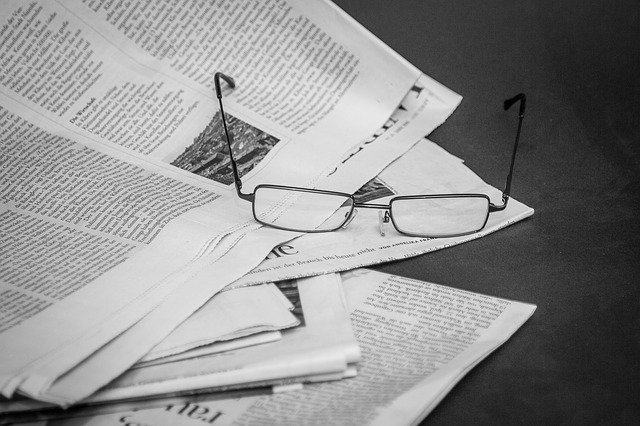Journalistic report: what it is, characteristics, structure, types of report and guidelines for its elaboration
Contents
What is reportage?
It is a type of journalistic text that belongs to the category of non-literary texts. It is a type of narration that explains facts of a newsworthy nature and seeks to disseminate them in order to inform the public. In some cases, it has been classified as one of the documentary formats in which a news event is expanded in depth.

This type of text exposes a fact with a higher level of analysis, in addition to an intention that reflects a greater investigative process of what is narrated. That is why the reportage is accompanied by other resources, among which we find background information about those involved or the facts, interviews, records, data collection and others obtained from different sources.
Main characteristics of the reportage
It is time to see the most important characteristics of this type of non-literary text and that allows us to distinguish it, in addition, from other journalistic texts. Let’s look at its main features:
Selection of the subject matter
Since a reportage must be of interest, it is possible that it covers not only one but several issues in its development. In this way, the report can be based on facts of reality in the present, or it can be elaborated on the basis of a topic of collective interest. Thus, it is possible to find reports on social, cultural and economic issues, travel, art of a certain period, biographies and events, shows, sports, among others.
Delimited subject matter
Although there are many topics or fields of extension that a report can have, in the case of writing one of them, it implies that the author exhausts all the sources available on this fact to develop it in a complete way. In this way, he/she nourishes the event he/she has chosen in an integral way with all the possible and necessary resources.
On objectivity
We have mentioned that although there is some subjectivity because it is the author who shows a point of view through which the report is developed, it is also true that it is not completely out of objectivity, since it is a journalistic text. That is why it is expected that the report addresses honest sources and provides real information about the subject. In this way, the author’s position is expressed based on reliable sources that will also be clear to readers.
Possible resources
One of the aspects we have mentioned is that the reportage can include a large number of resources both in its search for sources and in its writing exercise. That is why it is possible to add elements such as photographs, short narratives, interviews, quotes, recorded data, data from official sources, background information, among others.
Importance and interest
In order to develop a report with the intention of informing the public, it is essential that the topic or event chosen be of interest to the public. In this sense, the report, by itself, must be interesting for those who are going to read it and in this way it must be able to capture the attention. That is why the use of a title or initial description is so important, since they invite the audience to read it.
Structure of a report
Although there are several elements that may or may not be included in the report, it is possible to identify a series of aspects that are usually present following a general scheme and that allow them to deeply approach the subject they deal with. Thus, we have the following elements:
Headline
In the report we speak of a sentence as headline, in which the information is concentrated in such a way that the reader or audience can have a small idea about what is going to be developed in depth within the report.
Entrance paragraph
In this second section it is necessary to write information that captures the reader’s attention. In this way, at the beginning of the report, you should include immediate information that will allow the reader to contextualize the research and what is happening in the first place.
Body
The body or content of the report begins to develop the general information of the report. This includes, in an organized manner, each of the data collected, the interviews, background information and other resources to guide the research and content. It is the central part of the report.
Closing of the report
This last part is the end of the report. In this case, the closing can be concrete with a series of conclusions about the facts, particularly if it is a situation that has already ended, or it can end with an open ending in which the reader can draw his or her own conclusions about the facts, if the case is still open or has not been fully clarified, for example.

Types of reportage
At present, it is possible to identify a great variety of modalities through which reports are developed, based on aspects such as the field in which they are elaborated and in this sense, the purpose, the objective, among other elements. These are the most known types of reportage so far:
Scientific reportage
This group includes all those texts that deal with a dimension related to technological knowledge or that have to do with the area of science. Thus, in this case, the report is oriented to the explanation and subsequent interpretation in terms used in this area.
Research report
In this second type, we find those texts that are not completely detached from a news event, however, they are distinguished because the journalist is in charge of going deeper into an event or topic and deals with it from different points of view. In this way, a detailed follow-up is applied, which allows him/her to increase the information about it.
Explanatory reporting
In this case, the report is interested in events that have to do with news activities, so it is in charge of explaining those elements that are considered the most important and that take place within the historical moment in which they take place.
Narrative reporting
It consists of those reports that, although they share elements with the chronicle, are in charge of approaching the subject of interest from a narrative point of view about the events to be developed, hence its narrative character. It contains a structure defined by this genre, that is to say, it contains a beginning, a development and a denouement.
Formal reportage
It is a type of reportage that aims at an objective writing intention. It provides information related to a specific topic, similar to the way reviews do in the journalistic field, but it is distinguished by its clear and formal writing style.
Descriptive reportage
This last type of reportage is characterized by addressing a specific topic, based on the capacity of observation, as well as on the way in which the journalist delves into it in order to make a reconstruction of the impressions that he/she has individually, hence its process allows the elaboration of a series of descriptions.
Guidelines for the elaboration of a report
We end this section with a series of indications that should be taken into account when writing a report and that will be key for the correct final reading, according to the field or topic on which it is focused. These guidelines are:
On the choice of the topic
Following closely the previous point, we can either look for a topic of interest according to the type of audience we are going to address, or choose the topic and according to it, look for the audience. However, this point depends mainly on the medium or the intention on which we are going to develop the text.
There is a wide variety of topics that we can choose, depending on our preferences or interests, such as gastronomy, politics, art and culture, science, fashion, economy, social issues, among others.
Identifying the main ideas
The starting point for the elaboration of this type of text is the identification of the topic and the ideas to be developed in the text. Since it is a journalistic report, it is necessary to determine the central axis from key questions that allow us to solve this aspect to begin with. Among the most important questions are queries about interesting topics for the type of audience you are going to focus on, questions related to the development of the situation or event, among others.
Research
After having set out the topic and the questions to be addressed in the text, it is necessary to gather all the necessary information. This is a real event, so it is recommended that, if possible, the author or person in charge be as close as possible to the event to find information from primary sources that provide the closest data to the event.
The selection of sources is an indispensable process in which the information that has been collected must be contrasted to identify those who have the most knowledge about the event. This selection may include verbal testimonies, documents, publications, videos, surveys, press releases, interviews, observation, or others related to the subject.
Objectivity and accuracy
In the development of the text, following if possible the general structure that may have changes according to the medium or field of publication, it is important to maintain both the objectivity of the author and the accuracy of the information. Remember that this is a text that develops with clarity and objectivity a real fact determined to put it before the eyes of the public, which is why it is important that the writer remains impartial and does not add subjective evaluations.
On the other hand, it is also important to take into account that the text must be elaborated in such a way that it can be easily understood, since it is aimed at people of different ages or contexts, so it must be completely clear and precise with the information presented.
Importance of other resources
Although this depends especially on the medium or format in which the report is presented, the author can choose whether or not to incorporate other resources that allow him to take advantage of new technologies to enrich his content. Thus, if possible, he/she can add photographs of the facts, videos with testimonies or other ways to complement the written presentation and allow the reader to enjoy these resources that are increasingly used in physical and virtual formats.
Revision of the report
When you have finished, it is time to submit the text to its first revision. The first reading can help to identify several things, such as possible spelling mistakes, errors in the writing, problems in the connection of ideas, among others. That is why it is recommended to review the text at least twice so that we can eliminate any possible error that may hinder the understanding of the fact.
If possible, we can read the text aloud and even present it to someone who can give us his or her point of view on readability to ensure that the report fulfills its informative function. After the corrections we can finalize the text for publication.
If you want to know more about other types of text in the field of journalistic texts, or other formats that have been developed in this medium, remember that in our literature section you can find much more interesting information to continue learning about this art.
